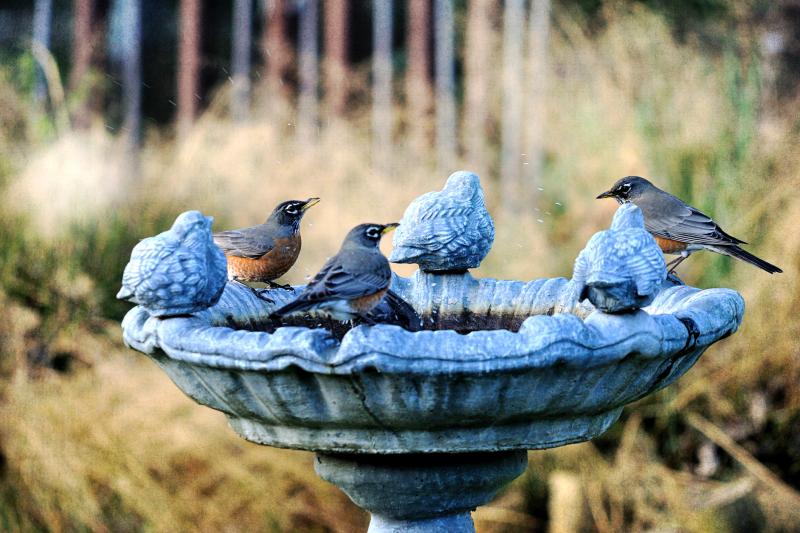
Outdoor bird baths and fountains are lovely additions to any garden, offering visual charm and attracting wildlife. But they’re also prime spots for algae, hard water stains, bird droppings, and mosquito larvae. Left uncleaned, these features can become unhealthy and unsightly.
Thankfully, pressure washing is one of the quickest and most effective ways to clean bird baths and garden fountains safely—if done with care. Let’s explore how to get it done without damaging your outdoor features or harming the environment. 🌿
🧽 Why Pressure Washing Is Ideal for Water Features
Traditional hand-cleaning takes time and elbow grease. A pressure washer provides:
- ✅ A deeper clean without harsh scrubbing
- ✅ Effective removal of algae, mildew, and gunk
- ✅ Faster turnaround time
- ✅ No need for toxic chemicals
With the right approach, it’s gentle enough to use even on delicate stone or resin fountains.
🛠️ Tools & Supplies Needed
- Pressure washer (1,200–2,000 PSI)
- 25° or 40° nozzle tip
- Biodegradable cleaner (optional)
- Soft brush or sponge
- Water hose
- Bucket or tarp (for water drainage)
- Safety goggles and gloves
Browse Amazon Here For Top Rated Power Washers And Accessories
🧼 Step-by-Step: Pressure Washing Bird Baths & Fountains
1. Turn Off Pumps and Power
If your fountain has a pump or electrical feature, disconnect it completely. Dry electrical components and move them to safety before cleaning.
2. Drain the Water Completely
Use a bucket or siphon hose to remove all standing water. You don’t want to blast stagnant water all over your garden.
3. Remove Debris and Loose Gunk
Use your hands, gloves, or a net to clear out leaves, feathers, or algae chunks.
4. Pre-Treat with Cleaner (Optional)
If you see heavy algae, mildew, or mineral deposits, spray with a safe, biodegradable cleaner (especially one marked safe for birds or aquatic life).
Let sit for 5–10 minutes—but don’t allow it to dry.
5. Pressure Wash from a Distance
Start with a 25° or 40° nozzle and hold the wand at least 12–18 inches away from the surface. Spray in smooth, controlled motions.
Focus on:
- The basin (inside and out)
- The fountain’s spouts and basins
- Any decorative elements like animal figures or carved edges
Avoid spraying directly into delicate joints or painted designs.
6. Scrub Stubborn Spots Gently
Use a soft brush or sponge to tackle any lingering stains.
7. Rinse Thoroughly
Finish with a low-pressure rinse. Make sure no soap or gunk remains.
🛑 What to Avoid
❌ High PSI on delicate stone or fiberglass (can cause chips or cracks)
❌ Using bleach or harsh chemical cleaners—toxic to birds and wildlife
❌ Forgetting to clean pump intake filters (they can clog quickly)
❌ Allowing water runoff into nearby garden beds with sensitive plants
💡 Optional Finishing Steps
- Add a bird-safe water conditioner before refilling
- Consider a UV clarifier for fountains prone to algae
- Reposition water features to get more sunlight (helps prevent algae buildup)
📅 How Often to Clean
- Bird baths: Every 1–2 weeks, especially in warm weather
- Fountains: Monthly or after heavy storms
- During mosquito season: Weekly!
🐦 Final Thoughts
Pressure washing bird baths and fountains is quick, safe, and satisfying. With just a little prep and the right pressure, you’ll restore these tranquil garden elements to their sparkling best—making them a healthy, clean haven for birds and a beautiful focal point for your yard. 🌸💧
Browse Amazon Here For Top Rated Power Washers And Accessories



